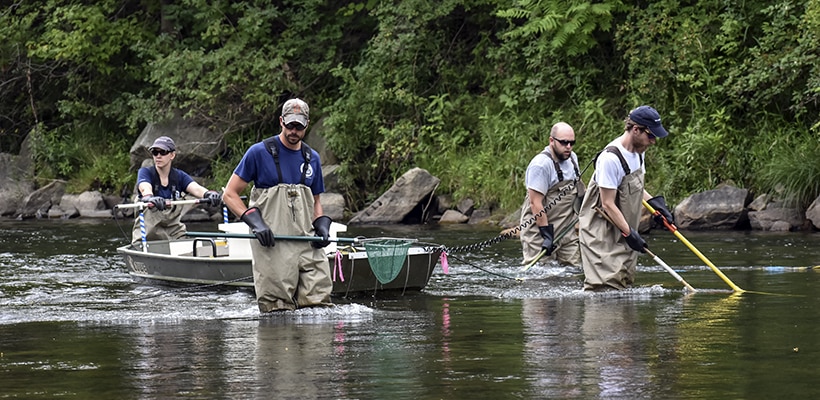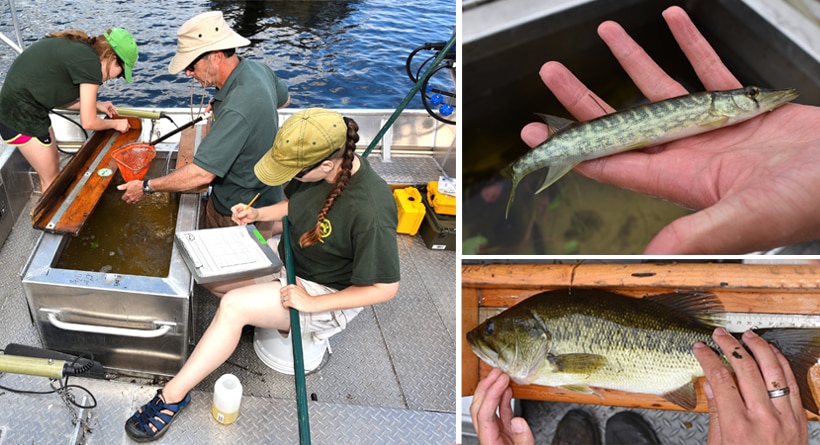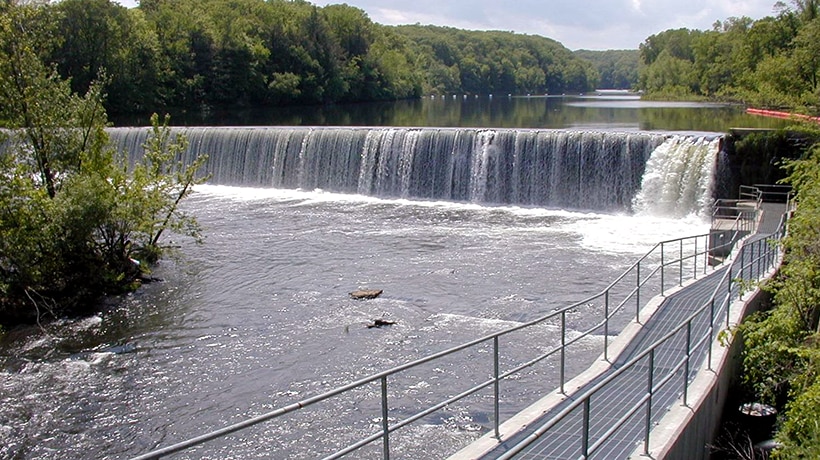Rivers and streams
Rivers and large streams in Massachusetts are home to many kinds of fish, including sportfish like northern pike, bowfin, and white catfish, as well as rare species like burbot. They are also places where recreational boating, water pumping, and hydropower generation take place. The many uses associated with larger flowing waters can change the quality of habitat available to fishes. MassWildlife Fish Biologists sample rivers and streams with electrofishing equipment to better understand how the composition of fish communities may be affected by water withdrawal, urban development, and dams. Data from our surveys are used to calculate indices of dissimilarity, a comparison of the existing community to that of one in a more pristine river. Tracking the locations of different species also allows us to see how climate change is affecting where fish are (or are not) found. This information is used in the development and implementation of targeted conservation. Surveys in each of the state’s major rivers and streams are done on a 10-15 year rotation.
Electrofishing on the Hoosic River
Lakes and ponds
MassWildlife visits lakes and ponds throughout the Commonwealth to gather data on fish and habitats. Much of that information is useful to anglers, including what fish species are found in a particular waterbody, approximate size ranges, and waterbody depth profiles. Fisheries data are also used in statewide analyses of species composition and fish health which are used to inform management decisions. Sites are chosen based on sampling history and access. Fish are sampled primarily using boat electrofishing between late May and early July.
Recording length and weights of fish
Cold water fisheries
Coldwater streams and rivers are critical habitat for a variety of fish including rare (American brook lamprey, longnose sucker, lake chub) and recreationally-important (brook trout) species. MassWildlife gathers fisheries, habitat, and water quality data from coldwater streams and uses this knowledge to protect and manage these unique habitats.
Coldwater fisheries are found across the entire state though they are mostly concentrated in the western half of Massachusetts with a few pockets in central Massachusetts and on Cape Cod. Surveying coldwater fisheries is mainly done from July to mid-September. This timeframe is chosen to correspond with the average low water period for the year. Conducting surveys during low water makes it easier for biologists to access and work in streams but also enhances sampling efficiency because water is generally clearer and fish are often more concentrated making them easier to catch. Most coldwater fisheries are surveyed using backpack or barge electrofishing.
Fish sampling in a coldwater stream in Barre, MA
Anadromous fish
Anadromous fish migrate between fresh and salt water – spending their adult lives at sea and laying their eggs in inland waters. MassWildlife works to maintain healthy populations of these migratory fish, which include American shad, river herring, sea lamprey, shortnose sturgeon, and American eel. There are several fish ladders and fish lifts located at dams on the Connecticut, Merrimack, and Westfield Rivers that allow migrating fish to reach spawning grounds upstream. MassWildlife supervises these fish passages and collects information on the number of fish going upstream as well as data on fish health. In addition, our staff coordinates hydropower licensing and compliance at federally-licensed dams in order to provide migratory fish passage and adequate stream flows for all fish and wildlife.
Fish ladder on the Westfield River
Featured projects and resources
- Massachusetts Wild Trout Conservation Plan
This plan outlines strategic approaches for conserving coldwater habitats through land acquisition, public outreach and regulations, while addressing emerging threats such as climate change, water withdrawal, pollution, and habitat alteration. - Lake trout surveys
Each fall, MassWildlife samples the Quabbin and Wachusett Reservoirs to monitor lake trout populations and examine population characteristics. - Hamant Brook stream restoration
The removal of three dams on Hamant Brook in Sturbridge has enhanced habitat for eastern brook trout and wood turtles. - Swift River trout research
MassWildlife biologists have completed the first phase of research to learn about this trout movement and survival in the popular Swift River. - Target Fish Community Technical Report
- Coldwater Fish Resource (CFR) list



